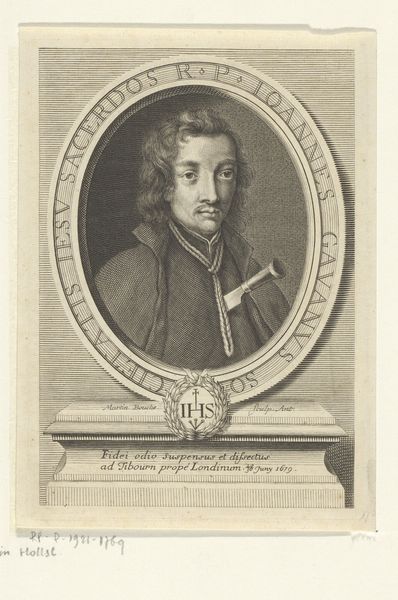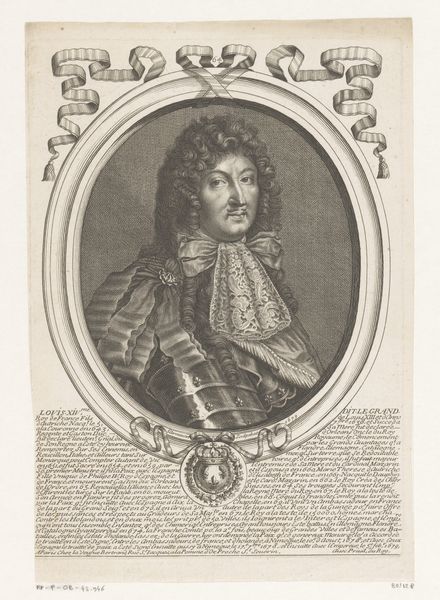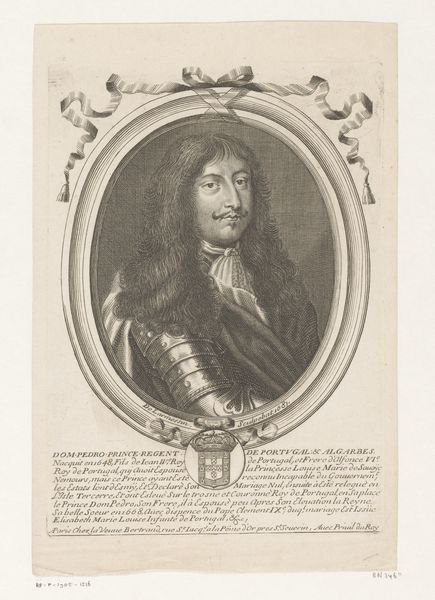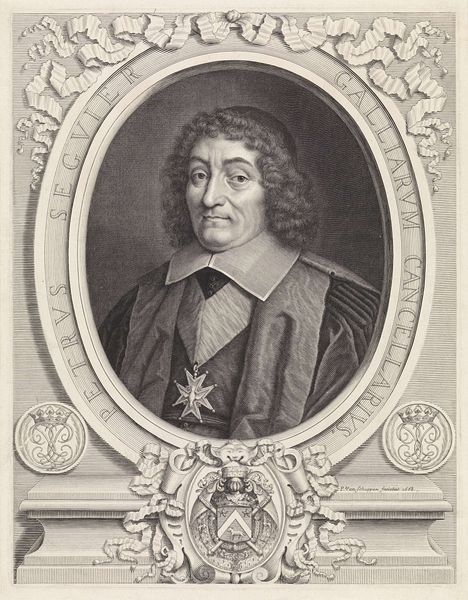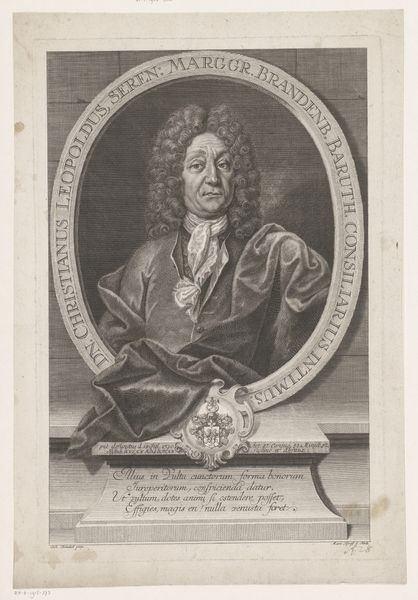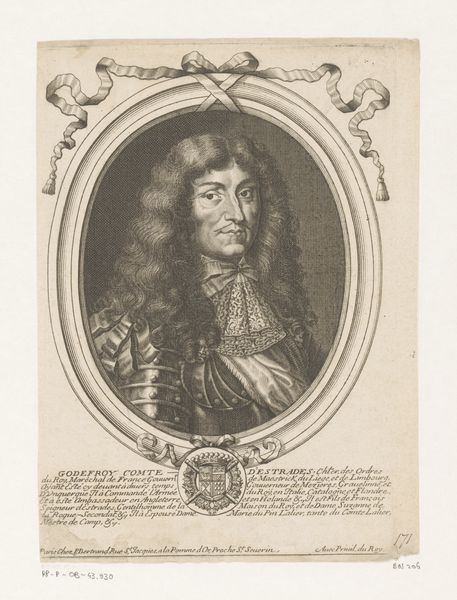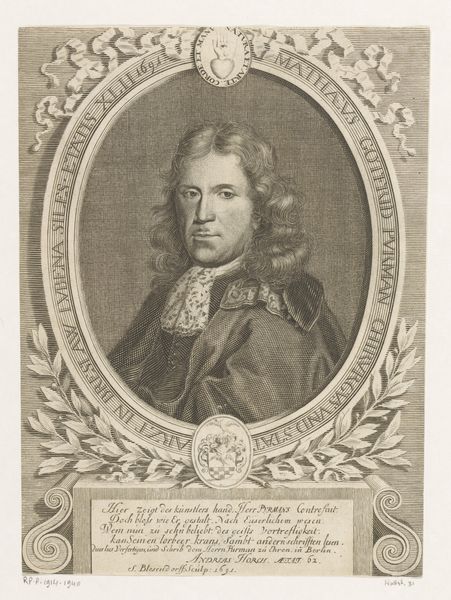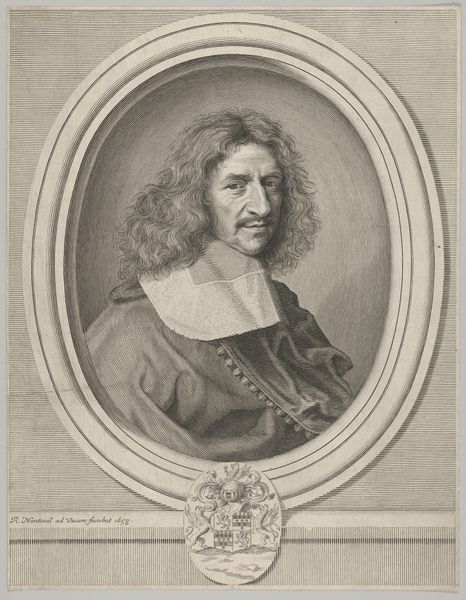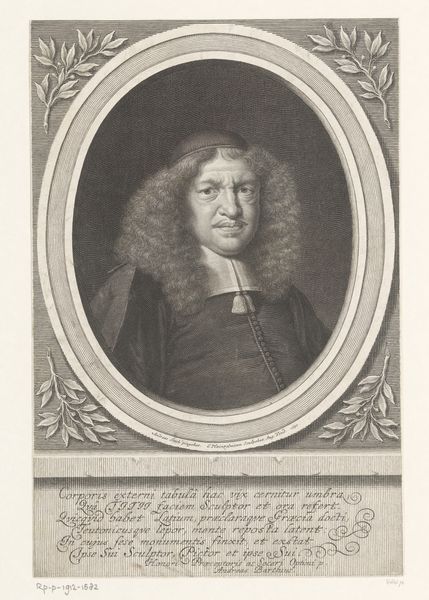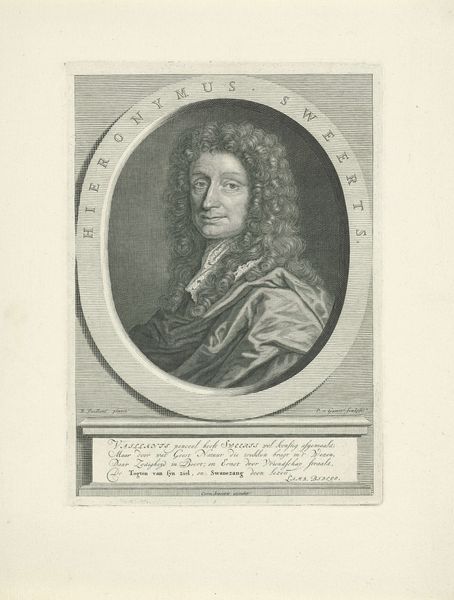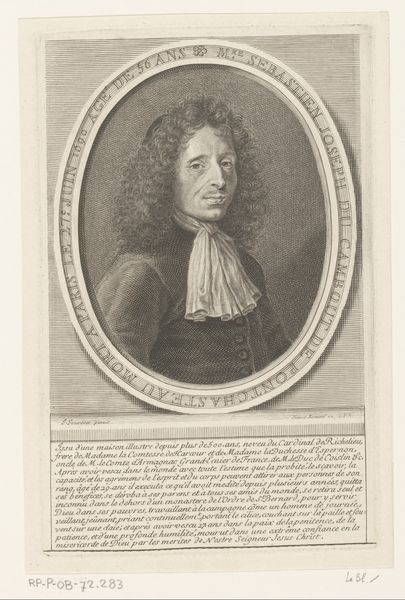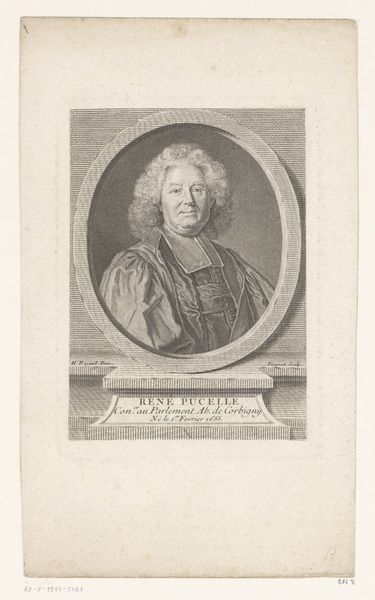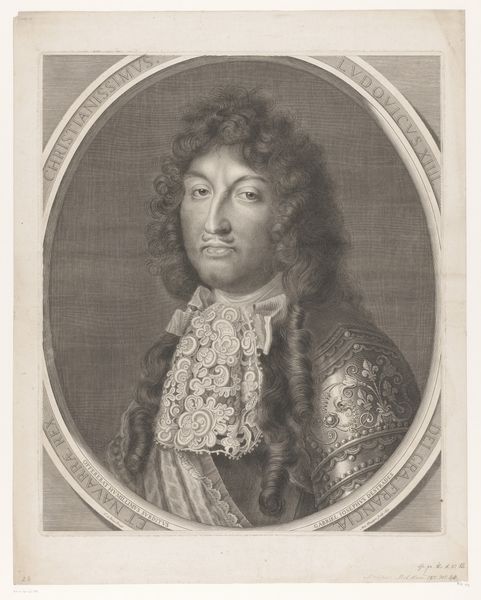
print, engraving
#
portrait
#
baroque
# print
#
old engraving style
#
portrait drawing
#
engraving
Dimensions: height 231 mm, width 167 mm
Copyright: Rijks Museum: Open Domain
Curator: Look at the severity and meticulousness of this engraving, Historian. This is a portrait of Pierre de Bonzi, dating back to 1689. Nicolas de Larmessin is credited with the work. Editor: The engraving certainly evokes a feeling of formality and perhaps even a bit of rigid control, doesn’t it? The man's expression seems to project power and confidence. I’d venture that this imagery must have functioned as a statement piece during its era. Curator: Absolutely. Let’s consider Bonzi’s socio-political position. A Cardinal and Royal advisor; his role meant he actively helped in maintaining order and solidifying royal power. The Baroque period itself was characterized by the dramatic display of authority. Editor: That explains a lot about its intent. In an intersectional analysis, one has to think of how portraits, like this one, worked to sustain the Church and monarchical reign by controlling the visual narratives that influenced identity formation. It would be crucial to decipher what it meant for someone of Bonzi’s rank to have such a rendering produced and distributed during that time. How were images and impressions being managed by elites like him? Curator: Precisely. And if we look at it as an exercise of the political theatre of Baroque society, how do the techniques employed – like the use of light and shadow, and even the lettering itself– amplify Bonzi’s authority and perceived righteousness? There is so much the print is actively communicating in ways which both overtly and subliminally re-iterated the hierarchical constructs of the day. Editor: This kind of artwork demands we acknowledge the power relations imbedded in its construction, and interrogate how it reinforces structures of dominance during the Baroque era and perhaps still relevant now. Curator: Yes, and by bringing these historical contexts and contemporary theories into conversation, we can better understand art's public role. Editor: Indeed. It provides rich context.
Comments
No comments
Be the first to comment and join the conversation on the ultimate creative platform.
